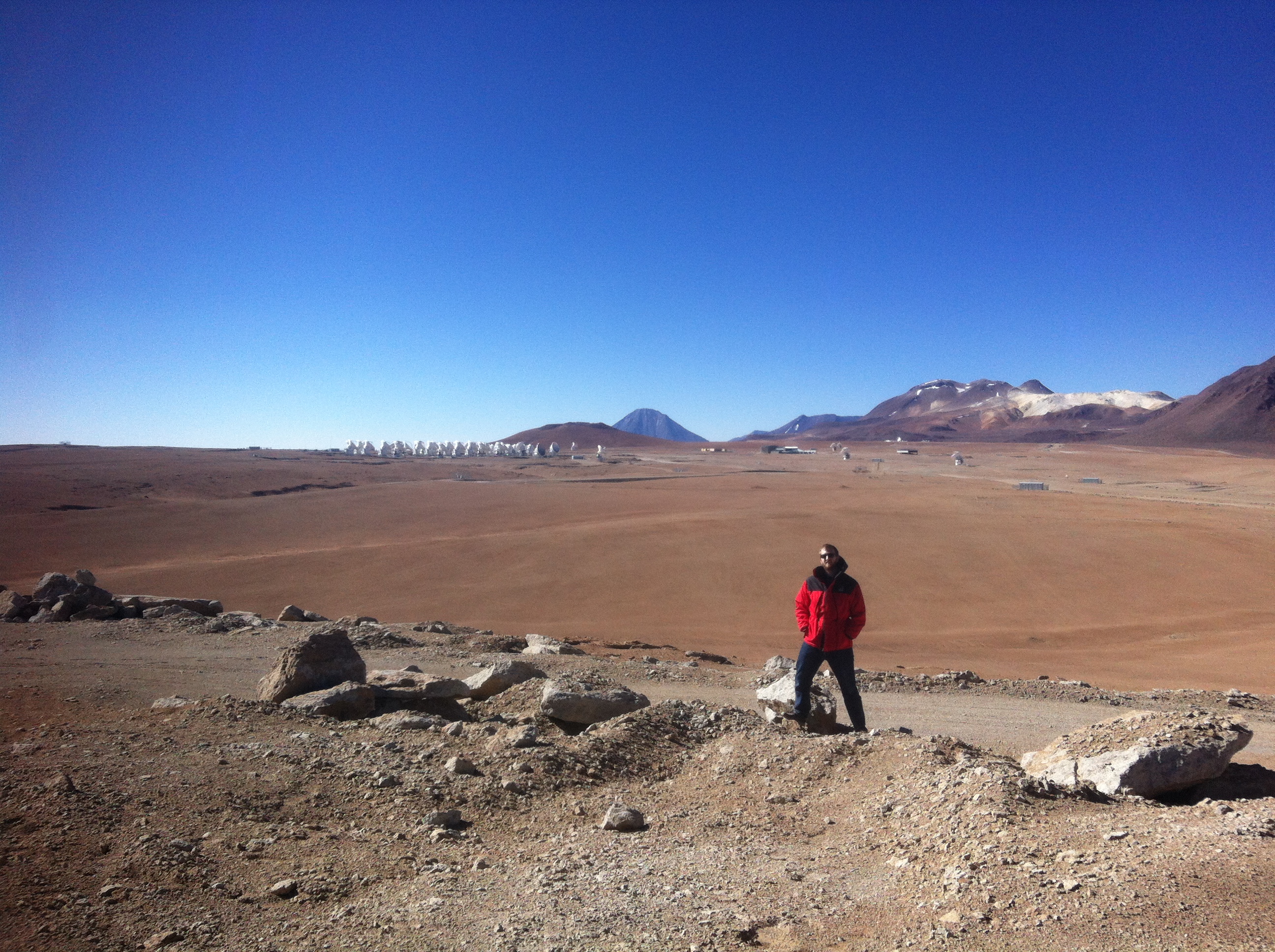Science
The ALMA Cycle 7 Call for Proposals is currently closed until next year
Introduction
My specialized scientific interests include multiwavelength astronomy, observational cosmology, and galaxy evolution. I am an active researcher in the field of observational astrophysics, specializing in dwarf galaxies with my collaborators on the Survey of HI in Extremely Low-mass Dwarfs (SHIELD) team led by Dr. John Cannon, Professor at Macalester College (see the list of my refereed papers in the Astrophysics Data System [ADS]). I also participate in collaborations attempting to use radio telescopes to constrain the physical properties of different celestial objects, like our moon, other planets, deep fields, and extragalactic water masers.

That picture is a reproduction of the Tully-Fisher relation extended to include dynamical masses determined in part using high-resolution gas measurements of the SHIELD galaxy sample. This sample is potentially a critical bridge population from which we can extrapolate observed reality near the current limits of our instrumental capability into tests of cosmological models. These particular sources were selected for analysis because they are intrinsically faint, diffuse, and isolated, thus also intrinsically interesting in this cosmological context because their physical properties differ so markedly from the more massive (and luminous, compact, crowded) sources which helped define empirical distance scaling laws like the TFR and Faber-Jackson relation. This work showed the utility of high-resolution neutral gas measurements of such sources, and helped enable continued observation and analysis increasing the number of low-mass sources available for dynamical comparison by at least an order of magnitude (i.e, 75+ more SHIELD galaxies subsequently targeted, with other samples ripe for continued study).
Some other questions that interest me now
What would broadband submillimeter observations of the lunar limb during meteoroid streaming events reveal about the chemical composition of lunar regolith?
How can we most efficiently utilize existing computing resources (i.e., processors that don't use qubits) and currently-deployed technology (like public clouds and the NRAO high-performance computing clusters) to solve scientific problems?
Can observations of emission spectra from carbon ions illuminate new and improved constraints on star formation physics, especially in galaxies that are relatively devoid of heavy elements?
Which are the most accurate parametric models of galaxy structure, kinematics, and dynamics? Can these models have sufficient predictive capability to unite the (remarkably successful and precise) predictions of cold-dark-matter cosomology with detailed constraints imposed by stellar and chemical observations?
What is the most effective and generalizable way to study populations of cosmic objects? For a description of how modern astronomy surveys the sky, see Djorgovski et al., 2013. Here are some methods I am considering:
- Complete, instrument-limited, time-domain samples of the entire sky, like the Planck satellite or the planned Large Synoptic Survey Telescope (LSST)
- Reductionist statistical inference using "typical" results or randomly generated simulations as prior probability distributions
- Small sample observation of sources with extreme characteristics using matched detectors
- Coordinated bolometric event-triggered observations of unique targets
- Something else entirely, like improving theory or training neural networks
Reference
- arXiv (astro-ph)
- ApJ
- AJ
- ApJ Letters
- MNRAS
- Phys. Rev. D
- PLOS ONE
- Science
- Nature
- ERA 534 (Condon & Ransom, 2nd web ed.)
- NRAO Synthesis Imaging Summer Schools
- GBTraining Workshop
- JAO practical interferometry series
- Statistics for astronomers
- astrofrog's python for scientists course notes
- fundamentals of radio interferometry course
Tools
- GitHub
- Overleaf
- Tectonic
- ALMA Science Archive (ASA) Query Page
- SAO/NASA ADS Search
- NASA Extragalactic Database (NED)
- Aladin
- Transient Name Server
- myNRAO Proposing
- StackExchange
- matplotlib docs
- Astrometry meta-data recalibration
- SeamlessAstronomy.org
